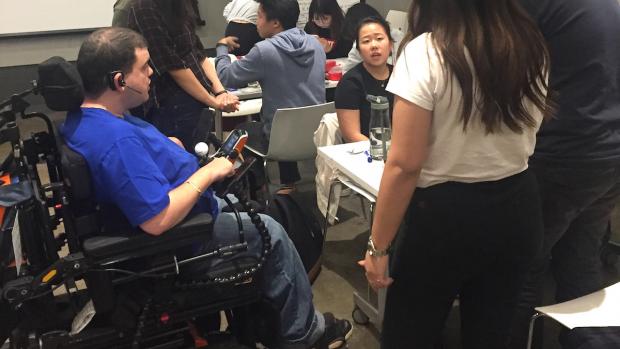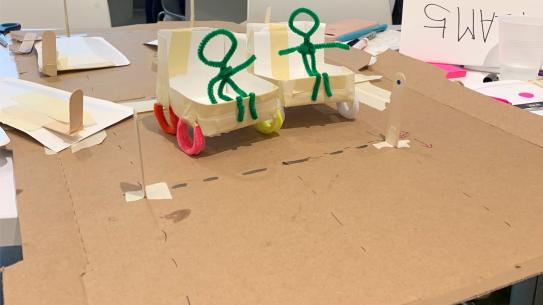NYU students exercise empathy as they learn to design for those with disabilities

Paul Tudisco (left), one of the ADAPT consultants, provides feedback to students participating in Design Jam, an event organized by NYU’s Design for America (DFA) student club.
Students at New York University were presented with the rare opportunity of making the world more accessible. Armed with their notepads and Post-It notes, NYU students from several schools including NYU Tandon participated in Design Jam, a flagship event organized by NYU’s Design for America (DFA) student club, an organization hosted by NYU Tandon but open to students from all schools within NYU. The event was held at NYU Tandon's MakerSpace in partnership with the Design Lab.
As students went through multiple stages of developing solutions using Human-Centred Design, they received mentoring from the members of the Service Design Collective in New York. To ensure that students get to conduct in-depth research, members of ADAPT — a non-profit working with people with disabilities — were also present to answer questions from students.
Natallie Kuhn from the Service Design Collective admired the curiosity of the students who stepped out to see how members of ADAPT accessed the subway, crossed streets and get coffee. As students observed the challenges that ADAPT members faced while performing everyday chores they geared their solutions to solve these problems with simple solutions.
“It was an eye-opening experience for me,” graduate student in Tandon's Integrated Digital Media program Alberta Hardiman said. Hardiman and her team members witnessed the trouble that people using wheelchairs had while using automated doors, as they tend to give very little time for the wheelchair user to enter.

“We decided to use sensors on the doors which won’t shut unless the wheelchair user has entered or exited the building completely,” Hardiman said.
Peter Cobb from ADAPT who supported the students during their research said that by interviewing and following those who use these services designed for people with disabilities, students got to experience the problem.
“Hearing about it is one thing, but they got to experience it,” Cobb said.
At the beginning of Design Jam, Professor Anne-Laure Fayard, who also serves as an advisor to NYU DFA, reminded students about the challenge of putting oneself in somebody’s shoes. Students were able to fully grasp Fayard’s statement after they ended the day experiencing for themselves how inaccessible public spaces are for many.




